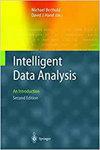Note-level singing melody transcription with transformers
IF 0.8
4区 计算机科学
Q4 COMPUTER SCIENCE, ARTIFICIAL INTELLIGENCE
引用次数: 0
Abstract
Recognizing a singing melody from an audio signal in terms of the music notes’ pitch onset and offset, referred to as note-level singing melody transcription, has been studied as a critical task in the field of automatic music transcription. The task is challenging due to the different timbre and vibrato of each vocal and the ambiguity of onset and offset of the human voice compared with other instrumental sounds. This paper proposes a note-level singing melody transcription model using sequence-to-sequence Transformers. The singing melody annotation is expressed as a monophonic melody sequence and used as a decoder sequence. Overlapping decoding is introduced to solve the problem of the context between segments being broken. Applying pitch augmentation and and adding noisy dataset with data cleansing turns out to be effective in preventing overfitting and generalizing the model performance. Ablation studies demonstrate the effects of the proposed techniques in note-level singing melody transcription, both quantitatively and qualitatively. The proposed model outperforms other models in note-level singing melody transcription performance for all the metrics considered. For fundamental frequency metrics, the voice detection performance of the proposed model is comparable to that of a vocal melody extraction model. Finally, subjective human evaluation demonstrates that the results of the proposed models are perceived as more accurate than the results of a previous study.音符级歌唱旋律转录与变压器
根据音符的音高起始和偏移,从音频信号中识别歌唱旋律,即音符级歌唱旋律转录,是音乐自动转录领域的一个重要研究课题。这项任务是具有挑战性的,因为每个人声的音色和颤音都不同,而且与其他乐器的声音相比,人声的开始和偏移也很模糊。本文提出了一种利用序列到序列转换器的音符级歌唱旋律转录模型。歌唱旋律注释表示为单音旋律序列,并用作解码器序列。为了解决片段间上下文被破坏的问题,引入了重叠解码。应用节距增强和添加带噪声的数据集并进行数据清洗,可以有效地防止过拟合和推广模型性能。消融研究证明了所提出的技术在音符水平唱歌旋律转录的影响,无论是定量的还是定性的。所提出的模型在所有考虑的指标上优于其他模型的音符级唱歌旋律转录性能。对于基频指标,所提模型的语音检测性能与人声旋律提取模型相当。最后,人类的主观评价表明,所提出的模型的结果被认为比以前的研究结果更准确。
本文章由计算机程序翻译,如有差异,请以英文原文为准。
求助全文
约1分钟内获得全文
求助全文
来源期刊

Intelligent Data Analysis
工程技术-计算机:人工智能
CiteScore
2.20
自引率
5.90%
发文量
85
审稿时长
3.3 months
期刊介绍:
Intelligent Data Analysis provides a forum for the examination of issues related to the research and applications of Artificial Intelligence techniques in data analysis across a variety of disciplines. These techniques include (but are not limited to): all areas of data visualization, data pre-processing (fusion, editing, transformation, filtering, sampling), data engineering, database mining techniques, tools and applications, use of domain knowledge in data analysis, big data applications, evolutionary algorithms, machine learning, neural nets, fuzzy logic, statistical pattern recognition, knowledge filtering, and post-processing. In particular, papers are preferred that discuss development of new AI related data analysis architectures, methodologies, and techniques and their applications to various domains.
 求助内容:
求助内容: 应助结果提醒方式:
应助结果提醒方式:


